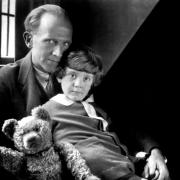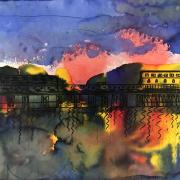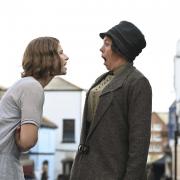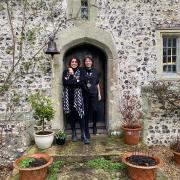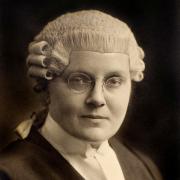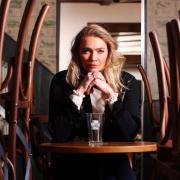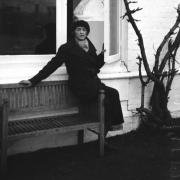Sussex men and women were among the convicts transported to Australia, some for the most trifling misdemeanours | Words: John Wright

Sussex provided its share of some 136,000 men and 25,000 women transported to Australia. One of those was 21-year-old Hurstpierpoint-born farm labourer James Knight, sentenced at the Lewes Quarter Sessions in 1834 for stealing a duck.
The usual term was seven years, women becoming assigned servants, men sent to farm. While stealing goods worth £1 (say £100 today) meant hanging, the sentence was often commuted to transportation.
Some were sent to Van Diemen’s Land (Tasmania) where Sussex convict Margaret Hill celebrated the end of her seven years by facing the magistrate 42 times on drink-related charges.
Twenty-year-old Falmer-born James Richard, tried at East Grinstead in 1786 for “larceny of animal”, is considered Australian royalty today by being in the First Fleet, aboard the Alexander, leaving Portsmouth on 13 May 1787, arriving after eight months on heaving seas on 9 January in Botany Bay, eight miles south of Sydney.

Ex-Navy school teacher John Hobden was born near Brighton and was transported to Tasmania in 1830 for embezzling a letter containing a £10 note while working as an assistant at the Brighton Post Office.
Leaving behind his wife and six children, he continued teaching despite bigamously marrying Ann Fitzgerald in 1850, having ten more children after becoming a clerk to Governor Arthur and embezzling again.
His obituary in The Mercury would call him “an old colonist who taught navigation to many who have since become masters of vessels and conducted the Cambridge Public School (Tasmania).”
St Leonards-born John Edwin Evenden was another incorrigible Post Office letter-stealer, tried at the Old Bailey in 1840 after working in London as a brewer and clerk. Put to work in Tasmania as a teacher then constable, even bush ranger (criminal) Martin Cash praised his efficiency – “my own case affording a melancholy proof”.

He married, had nine children, ran a farm but after his wife fell ill he was jailed in 1871 for stealing £140 (£16,000 today) in road monies. He was the last convict standing – and working as a tourist guide – when Port Arthur was closed.
“Almost 300 Sussex men and 25 women were transported between 1810 and 1840 by the East Sussex Quarter Sessions sitting at Lewes,” James Jupp wrote in The English in Australia.
“One-third were from Brighton, Hove and Preston, 19 from Lewes and seven from Uckfield, the rest scattered through most rural parishes and East Grinstead (six), Maresfield (seven), Framfield (seven), Salehurst (five), Ringmer (four) and Rye (four).
“Those transported from Sussex were mostly labourers for larceny.” Seventeen farm workers broke machinery they saw as threatening their livelihoods. “Other occupations included servant, cordwainer, butcher, baker, bricklayer, sweep, plumber, carpenter, farmer, fisherman and fellmaker.” But some crimes were far nastier than stealing to feed families.

Horsham-born carpenter John Upton, 49, a Methodist preacher in Brighton, was transported to Tasmania in 1845 for “rape upon a child nine years of age”.
Sacrilege was an offence: Brighton stable-man John Holden was convicted at the Sussex Assizes and banished to New South Wales in 1829 after robbing a chapel. Oddly, he had 14 years added to his life sentence “for theft and absconding”, Richard Gillard wrote on convictrecords.com.au, and he “received 50 lashes for dishonest conduct.”
Dennis Nightingale describes further: “Blood appeared about the tenth lash; he bore his punishment well.”
Some convicts thrived. Farmer’s son Thomas West, born in Hooe, was a married carpenter in 1800 when convicted of burglary at the Horsham Assizes. Leaving his wife behind, he arrived in Sydney, met someone else, had a son, Obed, and proved handy in the government lumberyard making coffins.

He got permission from Governor Macquarie to build a watermill. Granted 40 acres, he got into legal trouble for moving his fences but was pardoned in 1813 and given a cow – West by now adding dairying, an orchard and quarrying to his growing business.
By 1824 he had 120 cows, was granted another 160 acres to put them on and 1,280 acres for his quarry, becoming one of the colony’s wealthiest. Obed’s estate (after working with him) in 1891 was worth £74,389 – £10m today.
John Matthew Richardson was light-fingered but green-fingered too. Born in Slinfold, he was a Horsham nurseryman when theft got him transported to Sydney in 1816.
In 1821 he was sent to England in charge of a plant and seed collection. Caught burgling again, he was transported again, this time to Hobart, Tasmania as a gardener until New South Wales colonial botanist Charles Fraser hired him to oversee Sydney’s government gardens.

Appointed botanical collector to Surveyor-General Thomas Mitchell’s third expedition in 1836, Richardson discovered 68 new plant species – Mitchell didn’t credit him, calling him merely “the collector” – and provided specimens for the Sydney Botanic Gardens and the Australian Museum.
Today the pretty Hibiscus richardsonii is named after him, and in 2002 a kauri pine was planted in his honour at the Darwin Botanic Gardens.
In Tasmania serious offenders were sent to the Port Arthur Penitentiary on the island’s south-eastern peninsula, its narrow neck guarded by a line of vicious dogs.
Here convicts were charged with strange or trivial offences, such as Sussex ploughman burglar William Jupp in 1825, punished for “stealing vegetables, pilfering bread from a fellow prisoner, making away with a prisoner’s shirt, having a pigeon improperly,” Hilton and Hood wrote in Caught in the Act, and “three days’ solitary confinement on bread and water for eating a turnip.”

The list for various convicts goes on: “Having turnips improperly… washing his shirt during Divine Service… having lollipops in his possession… setting fire to his bedding… drawing improper figures on his slate… threatening to split the overseer’s skull with his spade…gross filthiness within the barrack square…wilfully breaking his wooden leg…apprehending Godfrey Moore and biting his nose off…groaning at the Lieutenant Governor…and concealing a man under her bed.”
Best of all was ‘Billy’ Hunt. His crime was “absconding”. Nothing unusual about that, except that Billy was “dressed as a kangaroo at the time and attempting to hop to freedom.”
The first settlement
1. A common entry in convicts’ gaol records was that their crime was “stealing a ship.” Since guards who filled out forms were often illiterate and spelt words phonetically it really meant “stealing a sheep.”

2. Among the convicts transported to Australia were men and women in their 80s and children as young as nine.
3. The First Fleet, led by Governor Arthur Phillip, consisted of two naval ships, six convict ships and three store ships and carried some 730 convicts (a quarter of them female), their children, 250 marines and their families.
4. On arrival in Sydney Governor Phillip found that they’d forgotten to bring “musket balls, paper, scythes, axes, crosscut saws, augers, chisels, wheelbarrows, canvas for sails, sheets, blankets, leather for shoes, and the list of convicts or their crimes.” (Ref: Mollie Gillen in The Founders of Australia)
5. Colonial settlement meant an uneasy relationship with Australia’s indigenous people. In 1790 Governor Phillip was wounded by a spear at Manly Cove but insisted that aborigines be treated well. The problem was one culture needing land on which to hunt freely, the other used to fencing and ownership.
6. In 1788 the First Fleet arrived at Port Jackson (Sydney) on 26 January, now called Australia Day. Sydneysiders celebrate in various ways such as crab-racing, jellyfish-eating, prawn-peeling and thong-throwing competitions. In recent years there has been some campaigning to change the date of Australia Day to one with less divisive historical connotations.




